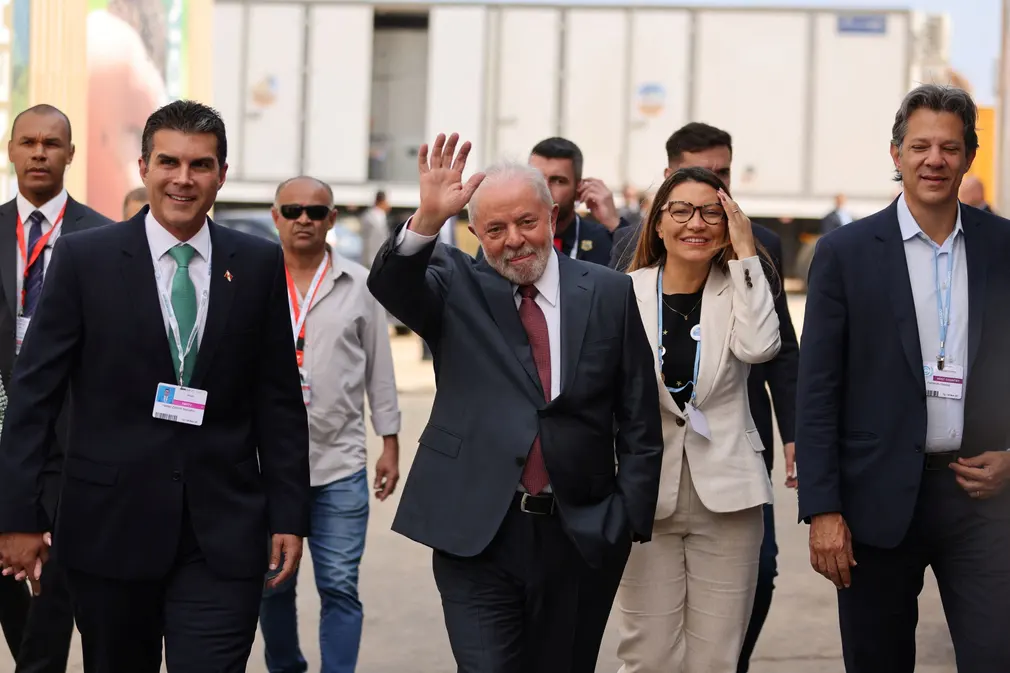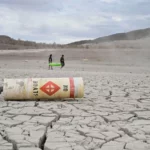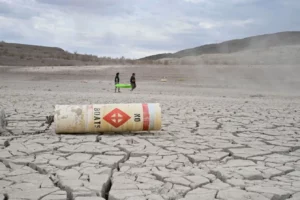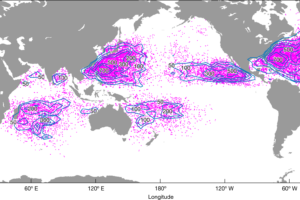As yet another record-breaking year draws to a close, Earth.Org loos back at what has happened in the last 12 months. Fortunately, despite the many grim headlines we were confronted with this year, there were some positive environmental news stories that left us feeling hopeful for the times ahead.
—
2022 was another year for the record books. From unbearable heatwaves and ruinous droughts to devastating floods and wildfires – we have seen it all. This summer will undoubtedly go down in history for the countless extreme weather events that have brought about destruction, claimed hundreds of thousands of lives, and displaced millions worldwide.
The latest IPCC report clearly shows that the world is rapidly losing sight of being able to stay under the crucial 1.5C limit of global temperature rise and a grim UN report even suggests that we are on track to warm above 2C, as the amount of greenhouse gases in the atmosphere continue their relentless rise.
The situation is dramatic and requires drastic measures. Thankfully, it’s not all bad news. This year, some things happened that made us a little less pessimistic about what the future holds for us and our precious planet. Keep reading to find out the top 6 good environmental news stories of 2022 that will hopefully help you cope with climate anxiety and make you a little more confident for the year to come.
6 Positive Environmental News Stories From 2022
1. Renewable energy production hit record levels (and is on track to become the largest source of global electricity by 2025)
The War in Ukraine and rising fossil fuel prices this year have undoubtedly pushed countries to look for alternative energy sources. Short on gas following Russia’s cutoff, the European Union has ramped up efforts to scale up renewable energy infrastructure, and the outcome is promising. In the second quarter of 2022, 43% of the bloc’s energy mix came from renewables, with 19 of the bloc’s member states achieving record wind and solar power generation. And while it’s true that some countries returned to coal (even if only temporarily) amid the energy crisis, recent data shows that EU emissions in November have reached their lowest value in at least 30 years, showing that concerns about the bloc regressing on its climate commitments are unfounded.
But Europe was not alone. China, the US, and India – whose economic growth has largely been fuelled by coal and gas – have also made great strides in their commitment to shifting to alternative energy sources in light of their net-zero targets.
According to the International Energy Agency’s latest report, global growth has been so substantial that renewable energy is now on track to become the largest source of global electricity generation by 2025, and by 2027, the world will have twice as much renewable capacity as in the previous five years.
2. The US passed the biggest climate bill in the country’s history
In August, US President Joe Biden signed the Inflation Reduction Act (IRA) into law. The historic piece of legislation is the single largest investment in climate and energy in America’s history, paving the way for a greener future in the US – the world’s second-largest polluting nation after China – but ultimately also for the entire planet.
The IRA sets aside US$369 billion to fight the climate crisis. Experts predict a 40% reduction in US emissions by 2030 from 2005 levels, which would bring the country one step closer to its commitment to reach net zero by 2050. ![]()
The Inflation Reduction Act is the largest piece of climate legislation ever taken up by the US Congress. Photo by Adam Schultz (Flickr)
The bill includes significant investments in renewables, particularly solar and offshore wind, as well as new credits for nuclear power production and clean hydrogen and incentives to develop more facilities that produce clean energy inputs, components, and finished products. It also provides tax breaks to make electric vehicles more affordable and help low-income households to turn away from gas-powered cars. Through these incentives for investment in clean energy, the government hopes to push consumers to make more sustainable choices.
What’s more, the IRA provides huge incentives for carbon capture, utilisation, and sequestration (CCUS) projects and expands the eligibility for carbon capture and sequestration credits.
You might also like: All You Need to Know About The US Inflation Reduction Act
3. COP27 countries reached a long-awaited deal to provide compensation for climate change damages to vulnerable developing nations
One of the main topics of discussion during November’s COP27 summit in Sharm El Sheikh, Egypt, was the financial support that wealthy nations must provide to the vulnerable Global South. Despite their little contribution to global warming, developing nations are the ones experiencing the greatest economic, social, and cultural losses and damages caused by anthropogenic climate change.
The conference kicked off with an agreement that placed the issue of loss and damage on the agenda for the first time in COP’s history after this year’s major disasters such as the devastating floods in Pakistan reignited the debate. The Asian nation, which contributes a negligible 0.8% to the global carbon footprint, was hit by unprecedented, erratic rains that resulted in mass destruction across the disaster-prone nation, killing nearly 2,000 people, displacing millions, and causing damage to cities and infrastructures for approximately US$28 billion. 
Hundreds of people marched through UN climate conference in first big protest at COP27 to demand compensation for climate change from richer countries and fossil fuel firms. Photo by UNFCCC (Flickr)
After two weeks of tense negotiations, the final COP27 agreement included the long-awaited provision to establish a fund to help developing countries that are “particularly vulnerable” to global warming bear the immediate costs of climate change-fuelled events, such as storms and floods. Despite the historic win for poor nations, however, details as to who would pay, how much, and who would benefit won’t be decided until next year, when a transitional committee is expected to make recommendations for countries to adopt at COP28 in November 2023.
4. New bloc-wide laws and regulations put the European Union at the forefront of international efforts to fight climate change
Throughout 2022, the European Union – the world’s third-largest emitter behind China and the US – has undoubtedly positioned itself as an indisputable leader in the fight against global warming. As part of the European Green Deal, a plan that sets out a clear path towards the bloc’s ambitious targets of a 55% reduction in carbon emissions compared to 1990 levels by 2030 and carbon neutrality by mid-century, the EU passed sweeping legislation and adopted new rules that will put its 27 member states on track to achieve their climate goals.
In October, the European Parliament and Council reached an agreement that effectively bans all sales of fossil fuel cars and vans by 2035, a crucial step forward considering that the transportation sector accounts for about 30% of the bloc’s total greenhouse gas emissions and almost two-thirds of oil used. The EU is effectively the world’s first (and for now only) region to go all-electric. Similar legislations were recently adopted by California and the State of New York, as both US states announced that they will ban the sales of gas-powered cars by 2035.
More recently, Brussels announced new bloc-wide regulations on packaging waste – which currently accounts for 36% of all municipal solid waste – and proposed a new plan to certify carbon removal projects, though key details will be worked out at a later point. EU lawmakers also agreed to add the shipping industry to the bloc’s Emission Trading System (ETS), a decision that effectively forces vessels to pay for their carbon dioxide, methane, and nitrogen dioxide emissions for voyages within the bloc and that adds pressure to scale up green infrastructure and technologies.
Lastly, EU countries agreed on a world-first carbon-border tariff targeting imported goods including steel, aluminium, cement, fertilisers, and electricity, which requires overseas and domestic companies to buy permits to cover the CO2 emissions associated with them.
5. Countries agreed to provide critical financing to save the world’s biodiversity at COP15
In December, representatives from 195 countries gathered in Montreal, Canada, for the UN’s Conference of the Parties to the Convention on Biological Diversity, otherwise known as COP15. Here, negotiators were tasked with securing a global action plan to halt and reverse biodiversity loss by the end of the decade.
Besides the 30×30 goal – an ambitious plan to protect at least 30% of the world’s land, inland waters, coastal areas, and oceans by 2030, negotiators agreed on allocating US$200 per year for biodiversity initiatives both from the private and public sector. Developed countries also pledged to provide $25 billion annually starting in 2025 and $30 billion by the end of the decade to poorer nations through a new biodiversity fund that will be created under the Global Environment Facility.
The conference came at a crucial time in history. Biodiversity loss is happening at the fastest pace ever recorded, making boosting conservation and ecosystem management pivotal to safeguarding our planet and humans, whose lives and survival depend on it. A grim report published by the World Wildlife Fund (WWF) earlier this year found that the world has lost about 69% of its wildlife population in the past 50 years. The study also suggests that freshwater species have also been “disproportionately impacted”, plummeting 83% on average in only half a century. Among the species most threatened by overfishing are pink dolphins and harlequin frogs.
6. Lula’s election in Brazil brings hope for the Amazon, the world’s largest rainforest and one of the most biologically diverse ecosystems
After years of persistent deforestation and a sharp increase in wildfires under climate denier Jair Bolsonaro, Lula’s astonishing comeback marked a turning point in Brazil’s fight against climate change and spurred hope for the future of the Amazon, the world’s largest rainforest and one of the most biologically diverse ecosystems, home to three million species of plants and animals.

Newly-elected president Lula arrives at COP27. Photo by Peter Dejong/AP
During Bolsonaro’s presidency, deforestation of the Amazon soared to a 15-year high, with scientists warning that the forest was nearing a tipping point beyond which there would be irreversible consequences that would be felt across the globe. September marked yet another record-breaking month, as nearly 1,455 square kilometres (562 square miles) of coverage were lost. This marked a staggering 48% increase from just a year ago and more than the current record, which was hit in September 2019.
During his election campaign, Lula vowed to fight Amazon deforestation and crack down on illegal gold miners, loggers, and ranchers responsible for widespread environmental destruction and the displacement of indigenous communities.
The newly elected president made a meaningful appearance during the second week of COP27, saying that climate change would have the highest profile in his government: “There is no climate security for the world without a protected Amazon. We will do whatever it takes to have zero deforestation and the degradation of our biomes.”
Source : earth.org











Add Comment